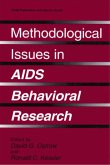During discussion of psychoanalysis and virtual reality in the new millennium, it was predicted that in the next century the differences between the conscious, unconscious, and the pre-conscious will have to be reconsidered in view of the ever-expanding concepts created by virtual reality. There will be virtual sexual acts over the Internet, ovum parthenogenesis will be possible without the intervention of the male, and clonic reproduction of the human being will be carried out in the laboratory. The child born in these circumstances will relate to a widening array of potential parental figures: the classic heterosexual couple, the single-parent family, the homosexual couple, the transsexual figure, etc. All this will of course alter the classic Oedipal constellation and without doubt the gender identity of the child.
There will be attempts to undergo psychoanalysis via the Internet in the same way that other kinds of psychotherapy are being virtualized. But this willforce us to redefine transference. On the other hand, it seems likely that psychoanalysis as a psychotherapeutic tool will, in the 21st century, relate more to somatic, medical patients or to the `worried well' than to psychiatric patients. These brief considerations on the scope of our deliberations in some way explain the diversity of this book, but also justify its interest.
There will be attempts to undergo psychoanalysis via the Internet in the same way that other kinds of psychotherapy are being virtualized. But this willforce us to redefine transference. On the other hand, it seems likely that psychoanalysis as a psychotherapeutic tool will, in the 21st century, relate more to somatic, medical patients or to the `worried well' than to psychiatric patients. These brief considerations on the scope of our deliberations in some way explain the diversity of this book, but also justify its interest.








